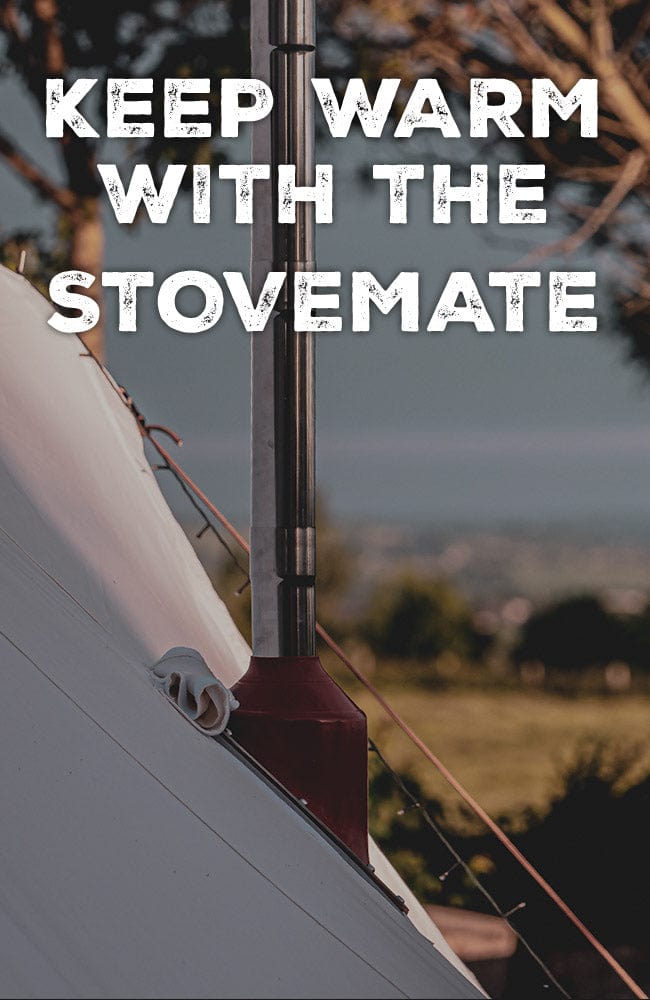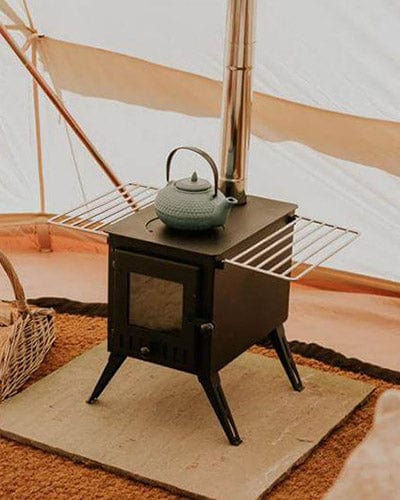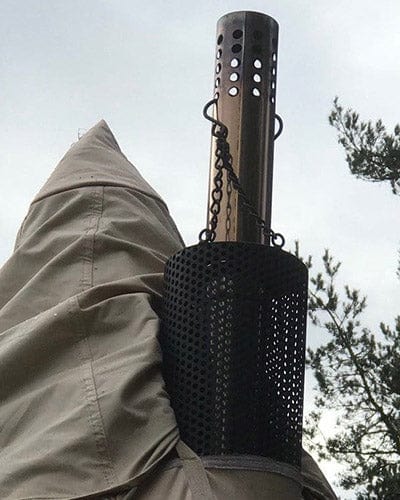Blog
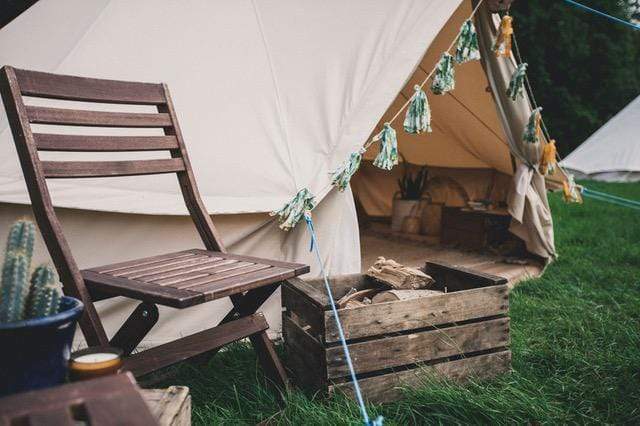
glamping
Buying A Bell Tent | Bell Tent Boutique
Bell tents have become one of the UK’s favourite tents and are popular for family holidays, festivals, parties, weddings and weekend getaways. With the choice to holiday in Britain becoming a family favourite, here’s our thoughts as to why to buy a Bell Tent.

bell tent
Family Camping Trip To Cornwall |The Guilty Mummy
Join the Guilty Mummy on their FIRST family camping trip with two children under 4. All the ups and some downs on a trip to Cornwall with their brand new Bell Tent.
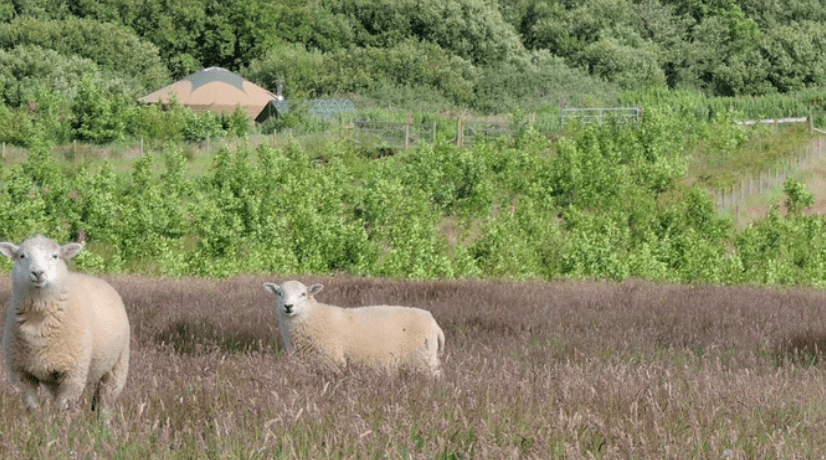
bell tent
Eco Friendly Camping at it's Very Best | Bell Tent Boutique
Eco Friendly Camping at it’s very best… If small and quiet campsites in great locations, that allow campfires and are gentle on the environment are what you are looking for, The Greener Camping Club is for you!
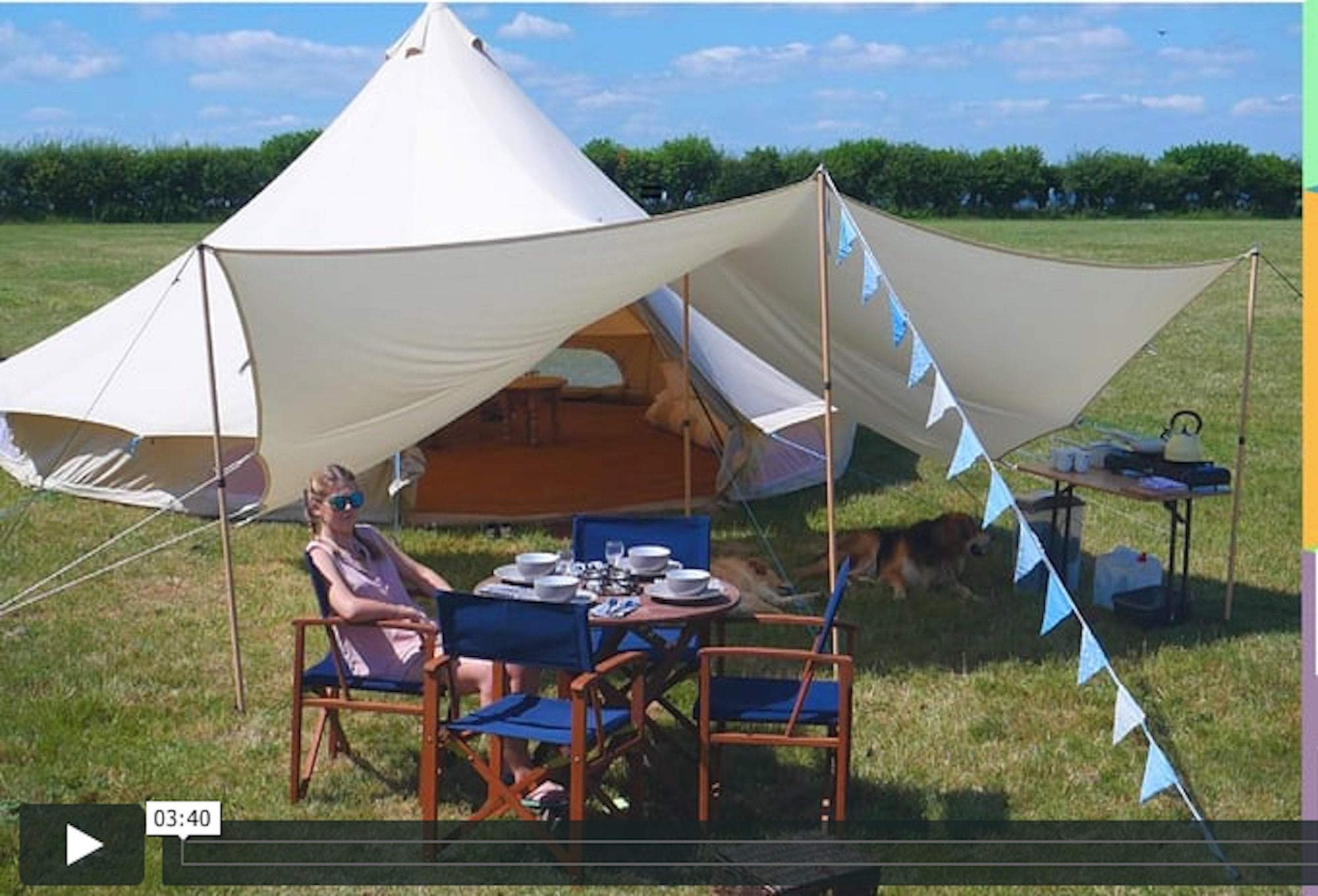
bell tent
Bell Tent Boutique - Unboxing & Initial Set Up
A quick unboxing and first set-up of our awesome 6 metre bell tent from Bell Tent Boutique. It's a great family run company with really friendly and knowledgable customer care and extremely high quality tents - we've already ordered a second!

glamping
10 Tips For Camping With Kids | Bell Tent Boutique
Here are a few things that helped us to enjoy camping with the kids, so I thought I'd share. If you have any more tips / experiences to add, please do so below. I'd love to hear them.

glamping
This Summer Try One Of These 15 Pitch Perfect Campsites.
Farrs Meadow, Dorset.
Few sites can match Farrs Meadow for ingenuity and peace. Quirky touches include upcycled horsebox showers and cattle troughs converted into washing-up sinks. There’s a separate paddock for campervans, and accommodation in a yurt, a vintage Dandy camper and a converted stable. It has wild swimming in the Stour river, and is a 10-minute walk from one of the National Trust’s tiniest properties, the Vine Inn in Pamphill, and half an hour from one of its biggest, the 8,500-acre Kingston Lacy estate. • Pitch for two £25, then £10/£5 per extra adult/child, yurts (sleep 4) £100, stable £130 (sleeps 4), May-September, 07913 838726, farrsmeadow.co.uk
Embers Camping Beaulieu, New Forest
As the name suggests, it’s all about campfires at Embers Camping Beaulieu, where every pitch comes with its own firepit. Campfire cooking is an essential part of the “purist” camping experience the site aims to offer, along with acres of space, no electrical hook-ups, and a tents-only policy. On a farm beside the tranquil Beaulieu river, Embers has pitches scattered among the trees and lawns, and beyond it lie cycling or walking trails in the New Forest, plus the chocolate-box village of Beaulieu, the National Motor Museum, and Beaulieu Abbey. • Adults from £20 a night, children 4-16 £5, open July-September, 0845 257 2267, emberscamping.co.uk
The Fire Pit Camp, Norfolk
On the leafy fringes of the village of Wendling, the Fire Pit is a family-friendly camping paradise, usually scented with campfire smoke. The large, car-free meadow is home to 420 saplings planted by the Woodland Trust and just 10 spacious pitches. The centrepiece is the Wren’s Nest, a two-level glamping dome sleeping eight, made from locally harvested hazel wood and recycled materials. The campsite hosts a food festival on 6 and 7 June. • Adult £15, child £7, Wren’s Nest £130 for up to four people, £12 per extra person (sleeps 8), open all year, 07717 315199, thefirepitcamp.co.uk
Ninham Country Holidays, Isle of Wight
Given its nickname as “the garden isle” it’s appropriate that the Isle of Wight can boast such a green and well-groomed campsite. The camping areas are spread across two fields, one large with a stylish softwood-clad ablutions block, the other slightly smaller; but both sets of campers get to use the heated swimming pool. The mature woodland and rolling countryside of Ninham’s sprawling 120 acres have a fabulous network of footpaths and cycle routes leading directly from the campsite, and it’s less than a mile from the seafront resort of Shanklin. • Adults from £6.50, children from £3.55, pitch from £3.60, open May-September, 01983 864243, ninham-holidays.co.uk
Ocean Pitch, Devon
Only a short strip of meadow and the sandy descent to the beach separate Ocean Pitch from the waves of Croyde Bay, north of Bideford. Its uninterrupted beach views mean surfers can keep an eye on the sea from their tent and race down with their board when the surf’s up. The wetsuit-averse will like the fact the site is on the coastal path, so it’s an easy ramble to quieter, neighbouring beaches. • Adults from £13, children half price, cars £3, open 17 June-6 September, 07581 024348, oceanpitch.co.uk
Tehidy, Cornwall
This family-run campsite near Redruth, with its red phone box and old-fashioned Roskilly’s ice-cream sign, is quaint without being twee. There’s an array of pitches for campers and caravanners, and a carefully maintained feel, from the neatly trimmed grass to the well-stocked shop in the old blacksmith’s forge. The brand-new insulated wigwams are equipped with mod cons such as fridge, microwave and kettle. The sands and hidden coves of St Ives are a woodland walk away, through Tehidy country park. • Pitch for two from £14 then £4pp, wigwams from £50, open March to end of October, 01209 216489, tehidy.co.uk
Cashel, Loch Lomond
Located right on the loch’s “bonnie banks”, this campsite couldn’t be any closer to the water without being in it. Despite the fact that there are more than 160 camping spaces on the site, it’s not hard to find a pitch with unobstructed loch views. Facilities include very powerful showers, and a small shop selling groceries and pre-hike cups of coffee. Scaling nearby Ben Lomond is a must, for far-reaching views across the rest of Scotland’s first national park. • Pitch for two adults from £13.50 or £17 for family of four, open March-October, 0845 130 8224, campingintheforest.co.uk
Twitey’s Tipis, Warwickshire
This is a back-to-basics campsite with a relaxed approach and acres of car-free space. Upon arrival, guests are presented with a wheelbarrow to help move their kit and can choose from 15 flat, mown pitches spread between two wildflower meadows. There are tipis to rent, furnished with lanterns and kitchen utensils, table and chairs, and logs for a sunset campfire. The site is four miles from Stratford-upon-Avon, and there’s lovely countryside to be enjoyed along Shakespeare’s Way, a walking route that replicates the 146 miles the playwright regularly travelled to and from London. • Pitch for four from £25 then £5pp, tipis sleeping four from £195 for two nights, open all year round, 07725 944204, twiteystipis.co.uk
The Sunny Field, Kent
It is little more than a year since Sasha and Philip bought eight grassy acres on the Kent Downs, yet already their rural campsite is much-loved. Surrounded by ancient trees sheltering the wildflower meadow from the outside world, this peaceful enclave is blessed with lovely light. Facilities are basic (portable loos and standing taps), but there are campfires at each pitch and dogs are welcome. It’s a short stroll downhill to a hot shower in the couple’s farmhouse, and the city of Canterbury is a 15-minute drive away. • Pitch for two £25, then £10/£5 for each extra adult/child, two-night minimum, open all year round, 01233 750024, thesunnyfield.co.uk
The Meadows, Cornwall
The Meadows’ adults-only policy means tranquillity reigns supreme at this campsite in the heart of the Pentewan valley, south of St Austell. A few dozen tents and campervans can pitch up right beside the stream that leads to the Little Winnick river, or guests can opt to stay in one of two retro-chic vintage caravans. A shop sells newlaid eggs from the Meadows’ own flock of chickens, and homemade wild garlic pesto – and it also runs a handy book-swap service. It’s a 20-minute walk to Pentewan beach, and just a little longer to the Lost Gardens of Heligan. • Pitch for two from £10 then £4pp, caravans for two from £300 a week or £200 for a weekend, open May-September, 01726 844383, themeadowspentewanvalley.co.uk The Ceridwen Centre, Carmarthenshire In 40 acres of lush west Wales farmland, the Ceridwen Centre has just five stunning camping pitches in the fabled Teifi Valley, straddling Ceredigion and Carmarthenshire. The farm has a wealth of environment-friendly features, including solar water heating, a biomass boiler and solar electricity. Glamping guests can choose from three handcrafted Welsh yurts, an “eco-pod” for two and a 19th-century Romany Gypsy caravan. The centre also hosts workshops, retreats and courses. • Tents from £5 per stay plus £7.50pp (under-threes free), yurt/eco-pod from £130/£132 for two nights, caravan from £185 for two nights, open all year, 01559 370517, ceridwencentre.co.uk
Camping at Ynysfaen, Brecon Beacons
Just outside the charming Brecon village of Trecastle lies the refreshingly no-frills Ynysfaen campsite. The tents-only five acres beside the babbling Usk river makes a great base camp for exploring the Brecon Beacons and Black Mountains, and at night the stargazing is unbeatable, as the site is part of the Brecon Beacons Dark Skies Reserve. The Usk reservoir, a mile away, claims to be the darkest place within it. One cosy shepherd’s hut for two can also be hired. • £10pp, shepherd’s hut (sleeps two) £140 for a weekend or £450 a week, open late March-October, 01874 636436, campingatynysfaen.co.uk
Underhill Farm, Shropshire
Despite its yurts, tipi and small cabin, Underhill Farm in rural Shropshire doesn’t call itself a glamping site. The focus here is on back-to-basics, eco-friendly camping, with almost everything made from recycled materials. Wild grass meadows, a copse and a small apple orchard surround a barn space that hosts workshops on making use of materials found on the doorstep – willow, clay for pottery, and wool for weaving. There are just five tent pitches, with campfires permitted in certain areas. Walks nearby could take in limestone cliffs for climbing and caving, or the famous Offa’s Dyke footpath. • £15 per tent for up to four people, barn (sleeps 10) £60 a night, open May to the end of the summer holidays, 07773 046111, underhillfarm.org
Eskdale, Lake District
Tucked away down a narrow country lane, the Eskdale Camping and Caravanning Club site is in one of the Lake District’s most secluded pockets, with eight acres of flat, well-maintained, tree-backed grassland and generous pitches bordered by a small stream. It’s ideally placed for climbing Scafell Pike. The Ravenglass and Eskdale Railway is also right on the doorstep. It may be part of the colossal Camping and Caravanning Club, but Eskdale has a cosy atmosphere. • From £7.70pp, open March-mid January, 01946 723253, campingandcaravanningclub.co.uk
Walkmill, Northumberland
Pinned in a meander of the weaving Coquet river, Walkmill’s waterside pitches have vast amounts of space, shared only with the sheep that graze here. A short stroll away in a caravan and campervan area, facilities include a proper bathroom alongside a mobile home that serves as an information centre. It’s two miles downstream to the beaches of the Northumberland coast, and on the way there’s the impressive cross-shaped keep of Warkworth Castle, one of the strongest fortresses in England. • Adults £6.50, children £2.50, open May to end of October, 01665 710155, walkmillcampsite.co.uk
All sites can be booked at coolcamping.co.uk and feature in Cool Camping Britain, 2nd edition, £16.95. Available from guardianbookshop.com for £13.56 including UK p&p http://www.theguardian.com/travel/2015/may/23/uk-cool-campsites-camping-glamping-yurts-britain
glamping
Canvas Tent Care Tips | Bell Tent Boutique
Most of us spend ages selecting our canvas tent, choosing the right size and specifications to suit our glamping style. Camping trips can create memories with friends and family, and having your tent in good condition can be an integral part of the success of any trip. With some care and attention your tent will become a faithful friend.
There are a few things you can do to keep your tent in good condition and help extend its life.
Here are some simple ideas that should improve your camping trips.
1. Before You Go:
When you first receive your tent, it is advisable to practice pitching. Learning to pitch your tent correctly will help to minimise any wear and tear the tent may receive.
Before setting off on your holiday it's a good idea to pitch up in the back garden and take the time to check over your tent for signs of wear and tear. Check that all its parts are present and in good working order. It’s always better to find out you’ve lost your tent pegs or damaged a pole at home, not when you’re away.
2. Carry Spare Parts With You:
Try to pack spare parts such as pegs and guy ropes, seam tape & sealant. Any spare patches of fabric and groundsheet that you have are also useful to carry with you. With a canvas tent having a needle and thread and some duct tape in your kit is always useful. Carrying spares will mean you can repair your tent whist away and can prevent any damage from potentially getting worse.
3. Care For Your Tent’s Zips:
As zips receive regular wear and tear you need to pay special attention to their care. Brushing your tent’s zips with a clean, dry toothbrush can help to keep them running smoothly. DO NOT FORCE ZIPS! If there is a fold in the fabric caught in the zip, work to gently free it. Lubricating your zips can also be a helpful preventative measure.
4. Separate Your Pegs And Poles:
When travelling try keep tent poles and tent pegs stored separately and away from the tent in their own bags. This helps avoid poles or pegs damaging the canvas or groundsheet whilst in transit.
5. Get An Awning:
Some people choose to have an awning at the front of their tent, if you do you should try to utilise as much as possible. Items like shoes, should be left in the awning area when entering your tent and never worn inside. Soles of your shoes can bring in sharp twigs and small stones which can pierce your tent’s groundsheet.
Food left lying around inside can attract hungry little animals in search of a snack! Be aware that small animals like mice can chew through your tent’s fabric in search of food.
6. The Perfect Pitch:
Taking the time to pitch your tent properly is one of the best ways to preserve it. A well-pitched tent is more stable than one that’s poorly pitched, and taught canvas will flap less in the wind, which means there’s less chance of tent poles breaking or fabric tearing.
Poles are under great tension during pitching, ensure they are fully connected before fitting. Always use all the guylines as these contribute to the overall stability of the tent. Guylines increase the strength of the tent, particularly in bad weather. Pitching correctly also involves finding a good spot to put it up. Before you put your tent up find a pitch (away from trees which could cause damage from sap) and remove any sticks and sharp stones from the ground so they don’t pierce the groundsheet.
7. Prepare Your Tent For Packing Away:
When packing your tent away and before putting your tent into its bag, shorten all the guy lines as much as possible in order to prevent tangling.
Most importantly, remove any twigs, grass, leaves and small stones that may have made their way inside your tent before packing it away; damp grass left inside the tent can quickly create mould. Simple care like this will help you prevent wear and stop more serious damage occurring.
8. Rolling Up:
There’s some debate about whether you should stuff your tent into its bag or take the time to roll it up What is certain is that your tent should never be folded up and put away. Over time, folding your tent will cause creases in the fabric and weak spots to develop. It can also damage its waterproof coating.
If you are a ‘stuffer’ one tip is to keep your tent’s doors at the top of the bag so they goes into the bag last. Doing this will allow air trapped inside your tent to escape more easily.
9. Storing Your Tent Properly:
When you get home from a trip, take your tent out of its bag and ensure that it’s well aired and totally dry before storing it away. This will help prevent mould forming. To speed up the process, hang your tent up indoors so that air can circulate. After airing your tent and making sure its dry, It’s best to store your tent in a dry cool and well-ventilated place. If you store your tent in its bag check its thoroughly dry before doing so. We can’t say it enough – if you pack away a cotton tent when its still even slightly damp, mould will start forming immediately. Also, keep pegs in their own bag so you don’t lose them.
Admittedly, taking care of your tent can involve a little work. However, doing so will extend the life of your tent for many seasons to come.
Happy Glamping!

glamping
Kate and Family's First Glamping Trip | Bell Tent Boutique
Fancy a proper family camping holiday this year? Here's a great video by Kate and family on their first bell tent camping trip with our tent and rugs☀️

glamping
Tent Life | Living Under Canvas | Bell Tent Boutique
On the odd occasion when camping in the summer our thoughts have turned to the question "what is it like to live in a tent full time?" One couple took the plunge and soon found the reality was far from their romantic ideals of living mortgage free.
We love this story of a remarkable couple, Matt and Lily who went further than just thinking about it.
Article By Patrick Barkham www.theguardian.com.
"A white frost clings to the fields and the mud on the farm is frozen hard. In a secluded paddock behind the stone farmhouse stands a small bell tent, a curl of smoke rising from the metal flue poking out of the canvas. The temperature dropped to -7C the previous evening but inside the tent it is surprisingly warm, which is just as well because since the middle of January this octagonal dwelling, 5m wide and mounted on old pallets above the mud, has been the home of Lily and Matt Gibson and their nine-month-old daughter, Louise.
As unpaid bills mounted, and the couple struggled to pay £625-a-month rent for a dilapidated house, they made a drastic decision: they believed they would be better off, and happier, trying to survive in a tent. When their tenancy agreement expired on 15 January, they pitched a tent they had bought for £370, borrowed from Lily's mother, on a farm in the west country.
"The mud and rain may be depressing, but the cold is scary," admits Lily. "But we're glad we've done this, even though it is frightening sometimes thinking about our responsibility for Louise and how we must keep her warm."
The woodburning stove inside the tent is their life. Everything is focused on keeping the fire burning. Every two hours at night, Matt must get up to feed it more logs. So far, it is working. It may be freezing outside but under a single layer of canvas, the couple have created a snug and idyllic-looking – if minuscule – home. The tent smells of woodsmoke and a delicious beef and vegetable broth is bubbling on the stove.
Matt was working in retail, spending wages on an expensive commute to a nearby city, and Lily, a freelance graphic designer, had stopped work when Louise was born. "Matt wasn't getting home until 7pm and we still couldn't afford to live properly," says Lily. "We paid all our rent but we weren't ever going out. We weren't buying new clothes. We didn't even get our hair cut. We'd occasionally get a coffee with friends in the town, but we were living very frugally. There was no way we could save at all and we wanted to do something for Louise's future. We tried to be positive and we wanted her to have a happy home, but it was really quite depressing."
Then they chanced on a press cutting about Simon Dale, who built his own eco-home for £3,000. This inspired them to take the first steps in their dream of buying a plot of land and building a low-impact home on it. "For me it was also inspired by the Occupy movements across the world," adds Lily. "I don't know what they might achieve but they have shifted consciousness in some way." Previously, she assumed that "if we could not afford our rent it was because we were not budgeting properly. The Occupy movement made me see it wasn't my fault – that it was the system that was not working."
Matt and Lily began by finding a farmer, a friend of a friend, who generously allowed them to pitch the tent on his land. Matt has quit his job but the couple are not claiming unemployment or housing benefit – Matt does farm work between cutting wood for their stove. It may sound romantic but the challenges of living simply under canvas are daunting.
"A lot of people would go mad in a tent at this time of year. People could find a million and one things to burst into tears about," says Lily. This morning, she hung her one warm jumper on the stove flue to warm up for a minute, got distracted by Louise and singed the jumper. "You definitely need a sense of humour and you can't be vain – you're just going to get upset by the mud or lack of running water."
Inside the tent are nice rugs, plants and homely trinkets the couple have picked up on their travels. "It's got that nomad feel to it, which I love," says Matt. It has been a steep learning curve, however. Because the sides slope inwards there is far less space than they anticipated – no furniture can be allowed to touch the canvas or the rain will come in. They have been flooded already, and after they failed to secure the stove flue, it blew down in a gale. It is now firmly screwed in place.
To begin with, they lived off tinned food heated on the stove top. "We were sat there for three hours wondering why things wouldn't come to the boil," says Lily. Since then, she has mastered slow cooking – Turkish meatballs with rice, pot-roasted chicken with roast potatoes and even omelettes in tin foil – while Matt has learned how the type and size of log can radically alter the stove's heating power. Although he is doing less paid labour now, he says his days seems fuller. "There are not enough hours in the day now."
Washing is done with a Wonderwash, a hand-cranked machine Lily imported from the US for £80. Clothes are cleaned with six jugs of hot water and two minutes of vigorous cranking, followed by 30 seconds of cranking in cold water to rinse. As the tent is a temporary measure, they borrow the downstairs loo at the farm and pay to have an occasional shower and charge their phone. "There is more drudgery, like hand-sweeping the floor, but it is more liberating and empowering as well," says Lily. "The simpler things are, the less alienated you feel from your own life – the more in control you are."
They have had to learn to prioritise certain jobs in the precious daylight hours. After dark, they light the tent with candles. There is no television, although Lily gets the internet on her phone. "We like talking, we sit around the fire and I sing to Louise a lot," she says. "We haven't felt bored, not for a moment. We don't miss having loads of TV channels showing things we don't want to watch anyway."
As they explain how they are coping with living in a tent, Lily and Matt are clear that their priority is Louise. They are meticulous about sterilising her bottles and ensuring that she is never cold. She and Matt may exchange nervous glances when the wind howls outside, but Louise loves it. For her, it seems that the tent is a secure home, where she can be physically and emotionally close to her parents. "So far she seems to be flourishing health-wise," smiles Lily. "She is very happy, alert and engaged with what's going on." Their concerns about Louise are assuaged by the knowledge that, in the worst-case scenario, they can seek a warm refuge in the farmhouse, as they were forced to on the night a storm destroyed their stove flue.
Their parents have been very supportive – "They get concerned when it's cold and ring to check we are OK," says Lily. What would they say to people who would see them as reckless for living with a small child in a tent in midwinter? "What we're doing might seem irresponsible," says Lily, "but if we stayed where we were with unaffordable rent we would have ended up in so much debt that we wouldn't have been able to feed Louise properly or get her warm clothes. It was terrifying. We would have been very depressed and therefore not able to produce a positive home environment for her and we would have ended up more dependent on benefits as well. We're trying to stand on our own two feet."
Living in a tent places them at the mercy of the elements, but Matt and Lily feel they have taken control of their own lives. By staying temporarily in the tent, they hope to save up to buy a piece of land on which they can build their own eco-home, a roundhouse with straw bale insulation. They are not just surviving: they are learning off-grid living skills they hope to teach to other families who want to live in a simpler, more sustainable way. Ideally they want to build their eco-home this summer but so far have been too busy keeping warm to find land. They admit their hope of buying a secluded half-acre on a south-facing slope, with a stream, for a few thousand pounds is probably unrealistic.
They may have chosen to live like this but, like other hard-pressed families, Matt and Lily have found that economic pressures made their old way of life intolerable. They believe more working families will be forced to live like they do, as rents and bills rise and first-time buyers are permanently priced out of the housing market. The government, however, seems unwilling to help people like Matt and Lily to help themselves. To get planning permission for a low-impact house on rural land requires navigating an impenetrable planning maze.
Lily would like to see reforms to encourage more self-built, low-impact housing. "There should be assistance to help people do this, not obstacles," she says.
The reality of life in a tent in the middle of a British winter is far from bucolic but there are unimagined benefits. Sustained by their dreams of a self-built home, Matt and Lily are determined to accentuate the positives. Lily has noticed how well Louise sleeps at night in the tent. In fact, they all sleep much better than they did. On clear nights, the moonlight shines through the canvas and they hear the hoot of owls and the barking of foxes. Are they woken by the cockerel in the morning? "There are about 15 of them, which Louise loves," says Matt.
"I love the sound of rain on the canvas, the candle light and the woodsmoke. I like everything being simplified," adds Lily. "It might be a cliche to talk about being in harmony with or close to nature but an element of that is very true."
Article By Patrick Barkham www.theguardian.com.

